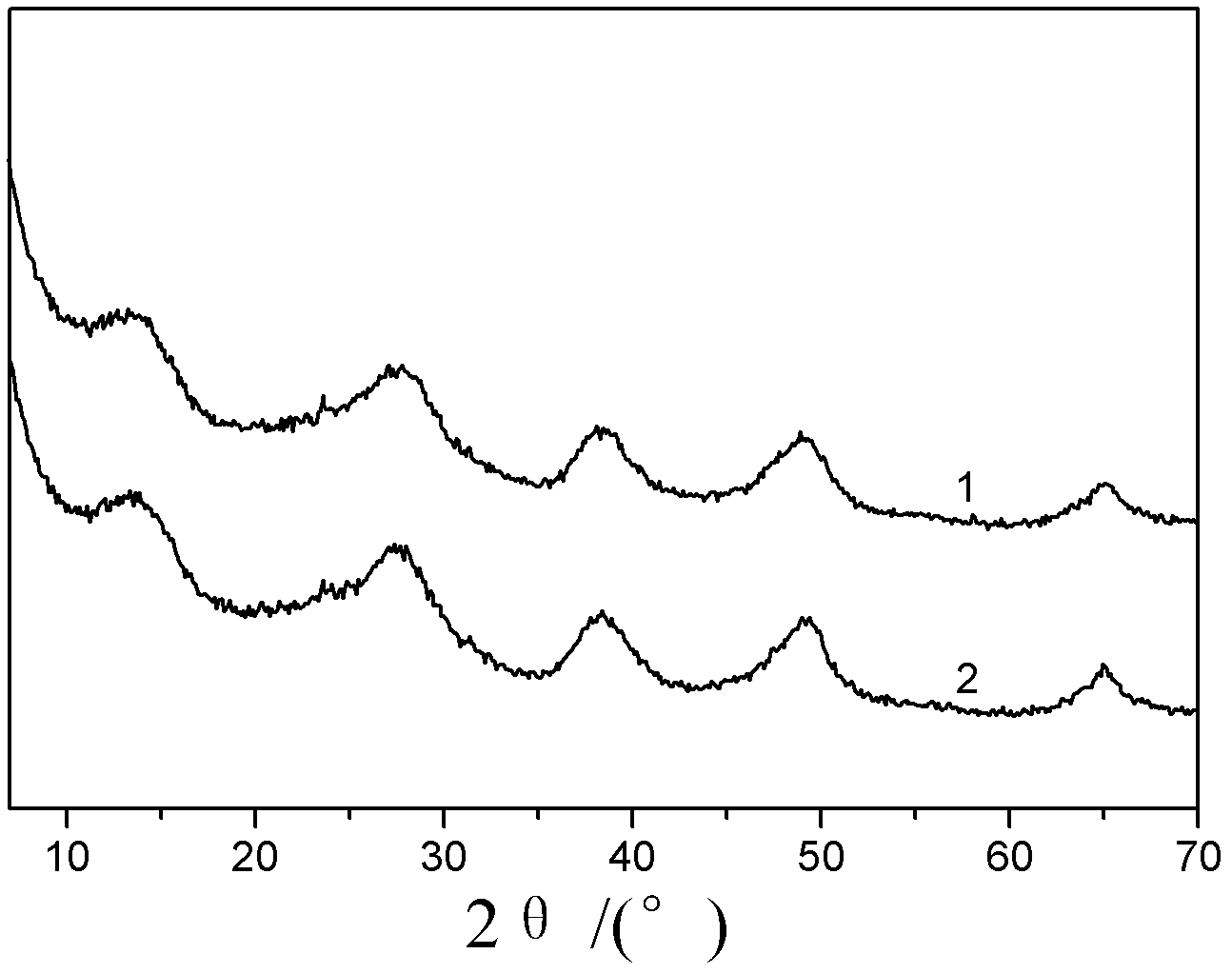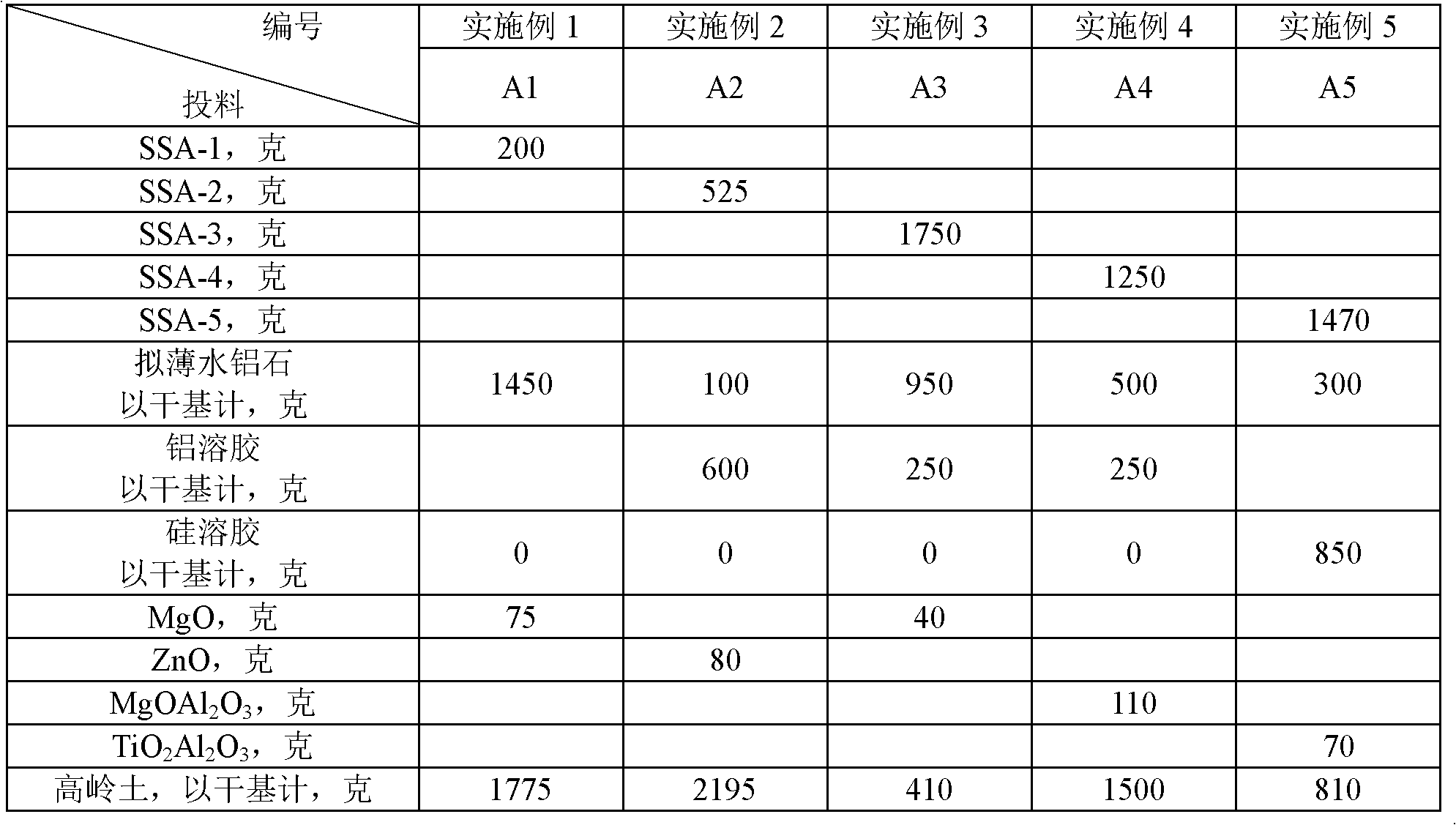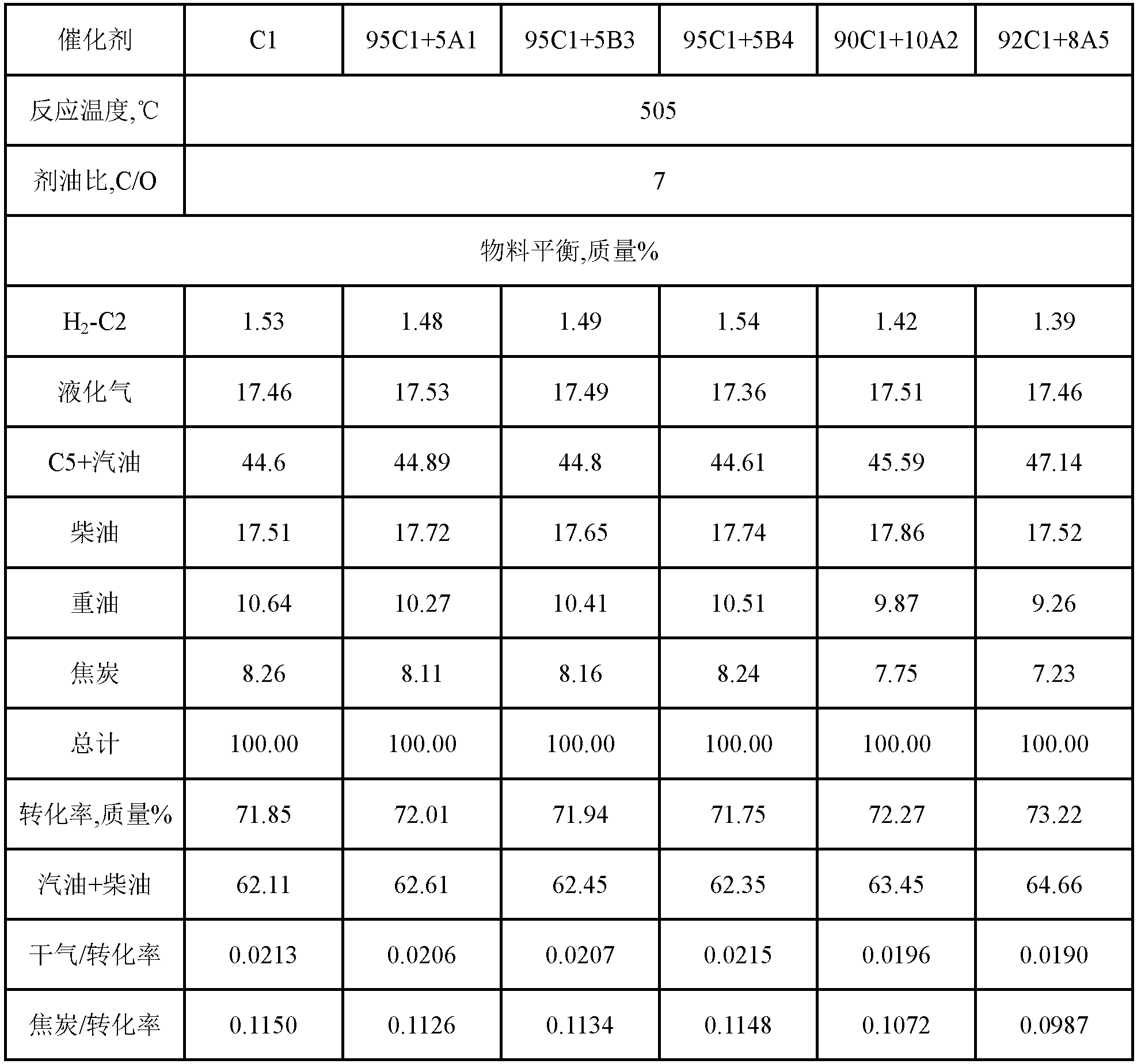Catalytic cracking auxiliary agent and preparation method thereof
A catalytic cracking aid, inorganic oxide technology, applied in catalytic cracking, chemical instruments and methods, cracking and other directions, can solve the problems of metal pollution resistance and heavy oil conversion capacity need to be improved, the cost of auxiliary agents is increased, and the price is expensive. Achieve the effect of reducing production cost, improving production efficiency and high light oil yield
- Summary
- Abstract
- Description
- Claims
- Application Information
AI Technical Summary
Problems solved by technology
Method used
Image
Examples
preparation example Construction
[0022] In the present invention, the non-ion-exchanged mesoporous silica-alumina material can be various mesoporous silica-alumina materials without any ion exchange commonly used in the art. The non-ion-exchanged mesoporous silica-alumina material can be prepared according to conventional methods, and the preparation method can include, for example, neutralizing the aluminum source and alkali solution at room temperature to 85°C to form a gel, and the final pH of the gel is 7 -11; then follow SiO 2 :Al 2 o 3 =1:0.6-9 weight ratio to add silicon source, aging at room temperature to 90°C for 1-10 hours, and then filter. In the present invention, the silica-alumina precipitate obtained after the filtration can be directly used as the non-ion-exchanged mesoporous silica-alumina material, or it can be used as the ion-free mesoporous silica-alumina material after being dried and / or calcined. Exchanged mesoporous silica-alumina materials.
[0023] In the present invention, the a...
preparation Embodiment 1
[0061] The preparation process of the mesoporous silicon-aluminum material SSA-1 is basically the same as that of the mesoporous silicon-aluminum material SA-1 in Example 1 of CN1565733A, except that the ammonium exchange process is replaced by an acid exchange process. The intermediate sediment of SA-1, i.e. the silicon-aluminum precipitate after aging and filtering, is mixed with water in a weight ratio of 1:10, and then the HCl solution (concentration is 10% by weight) is pressed into the sediment (dry basis): HCl=1:0.07 weight ratio was added to the above slurry, contacted at 55°C for 30 minutes, filtered, dried and calcined to obtain a mesoporous silica-alumina material, denoted as SSA-1. The X-ray diffraction spectrum of the sample is shown in figure 1 Curve 2 in . The elemental analysis gravimetric chemical composition of this sample is 0.14Na 2 O·73.6Al 2 o 3 26.1 SiO2 2 .
preparation Embodiment 2
[0063] The preparation process of the mesoporous silicon-aluminum material SSA-2 is basically the same as that of the mesoporous silicon-aluminum material SA-2 in Example 2 of CN1565733A, except that the ammonium exchange process is replaced by an acid exchange process. The intermediate precipitate of SA-2, that is, the aged and filtered silicon-aluminum precipitate, is mixed with water in a weight ratio of 1:10, and then the HCl solution is weighed according to the weight of the precipitate (dry basis): HCl=1:0.12 Add it to the above slurry, contact it at 55°C for 40 minutes, filter, dry and roast to obtain a mesoporous silicon-aluminum material, which is designated as SSA-2. This sample has figure 1 The characteristics of the X-ray diffraction spectrum line of middle curve 2; its elemental analysis gravimetric chemical composition is 0.1Na 2 O·58.9Al 2 o 3 40.9SiO2 2 .
PUM
 Login to View More
Login to View More Abstract
Description
Claims
Application Information
 Login to View More
Login to View More - R&D
- Intellectual Property
- Life Sciences
- Materials
- Tech Scout
- Unparalleled Data Quality
- Higher Quality Content
- 60% Fewer Hallucinations
Browse by: Latest US Patents, China's latest patents, Technical Efficacy Thesaurus, Application Domain, Technology Topic, Popular Technical Reports.
© 2025 PatSnap. All rights reserved.Legal|Privacy policy|Modern Slavery Act Transparency Statement|Sitemap|About US| Contact US: help@patsnap.com



